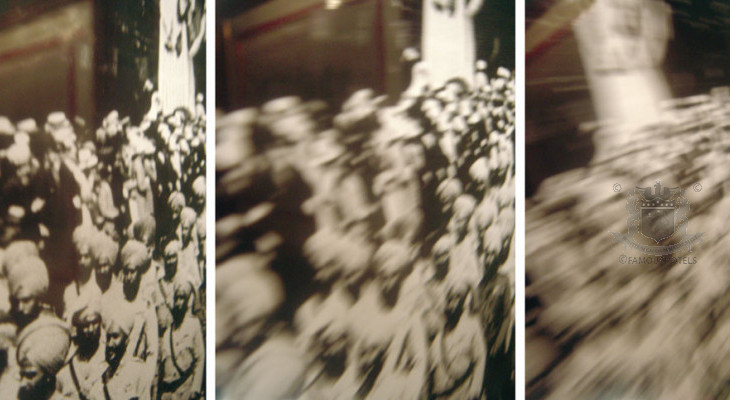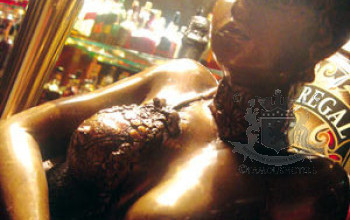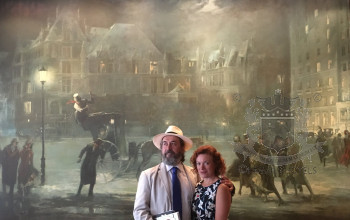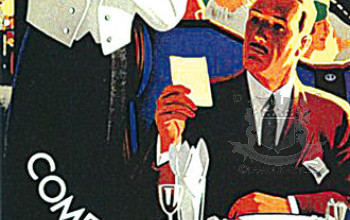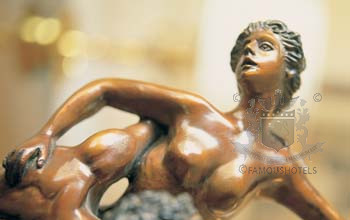Imperial New Delhi
( words)
Coverpicture: India — The Long March, by Joplin SinclairBy Andreas Augustin
The history of the Hotel Imperial brought me back to this hotel which I had been visiting since the 1980s. Happy personal memories were merged with professional research, carried out in India and internationally with devotion and attention to detail. Archives around the world became valuable sources, interviews with active and retired members of staff added stories and anecdotes to the growing collection of facts. With the help of the owning family and the management of the hotel finally the detailed puzzle of the history of New Delhi’s premiere hotel was completed. 
Famous for its strict Art Deco architecture, The Imperial was New Delhi’s first luxurious grand hotel.
The 'fastest turnaround in the hotel industry'
My personal Imperial saga had started about 1988. Back in those days, I remember the hotel being a dark and almost dilapidated site, but buzzing with business. It was the kind of place where backpackers mingled with business travellers. A shaky Ambassador taxi transported me from the airport to the city. Nobody was there to greet me at the hotel. For the hotel staff, we, the guests, these strange little creatures of foreign origin, were just a tiny distraction in their daily routine of watching the time pass between – always far too early – in the morning and the moment they went home (or the moment when we were finaly gone). 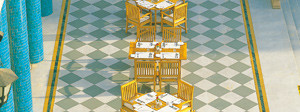
Two decades is a long time, however. When I came back to The Imperial, a member of the front office staff welcomed me at the airport terminal; cooling towels were handed out before the new Mercedes-S class took off.
The Sikh doormen traditionally guarding the hotel opened the door of the limousine and greeted me with a friendly "Welcome to The Imperial!" Smartly attired bell-girls pushed the inner doors open. Elegant staff in stylish uniforms – courtesy of designer Raghavendra Rathore – glided hurriedly through the brightly lit house like friendly ghosts in a Harry Potter movie. The corridors were adorned with thousands of pieces of art.
What had happened?
Researching the history of the hotel, I had to go back to the day when New Delhi was declared the capital of India. That was the year 1911. Slowly I worked my way up to the day the hotel came into being. That was between 1934-1936. The Singh family had built it, but rented it out to the Oberoi family, who ran the place. Many years passed. The nation of Pakistan was founded at the hotel in the wake of World War II.
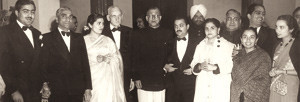 With the help of local picture scouts and the hotel's history guide Ominder Chawdhary we unearthed wonderful photographs from the heydays of the hotel. Nehru (centre) held important political meetings at the hotel.
With the help of local picture scouts and the hotel's history guide Ominder Chawdhary we unearthed wonderful photographs from the heydays of the hotel. Nehru (centre) held important political meetings at the hotel. 
In the 1980s a member of the owning family took the helm of The Imperial: Jasdev Singh Akoi. It was upon him to undertake the monumental task of renovating a hotel described thus by Michel de Grèce: '… in Delhi the travellers will go to The Imperial. The red upholstery is still threadbare to the point of decrepitude. Most of the light bulbs are burned out, the lamps are delightfully bizarre. Likewise, the bellboys understand nothing at all, yet their philosophical air is irresistible.'
Jasdev Singh Akoi took his place in the driving seat of the company, just as easily as he slides into his splendid Jaguar Mark III, 1953 model. With his natural sense for elegance and speed he became the long missing visionary leader of the good old Imperial. With the help of his wife Mira he worked seven days a week, 18 hours a day. Wing after wing of The Imperial was renovated. No part of the hotel could be closed as the income was needed to pay for the work. Temporary lobbies had to be created, and electricity transformers had to be moved without being turned off.

Photo: Jasdev Singh Akoi, his wife Mira and their son Gobind, the new man at the helm of the Imperial.
There was still very much of the 'old' in The Imperial. The Los Angeles Times correspondent John-Thor Dahlburg wrote in October 1994: 'Take the narrow six passenger elevator, said to be Delhi's oldest, up to the rooms and you may feel as if you've been whisked back to the twilight of the British Empire. The Imperial has added a new wing but, realising that its history gives the building a character no other Delhi hotel can match, room rates have been revised so that the guests pay more to stay in the old wing, along with the ghosts of Nehru and Jinnah.'
Meanwhile, Jasdev Singh Akoi had begun to collect art and antiques, buying from the palaces, collecting some 5,000 pieces of art. Singh Akoi decided to combine hotel and museum in one.  Artwork needs space. A new floor was added, the number of rooms increased by 57 units. In 1997 he proudly invited guests to the first opening of his 'Great Exhibition of Imperial Art' at the hotel. His masterpiece was still to come.
Artwork needs space. A new floor was added, the number of rooms increased by 57 units. In 1997 he proudly invited guests to the first opening of his 'Great Exhibition of Imperial Art' at the hotel. His masterpiece was still to come.
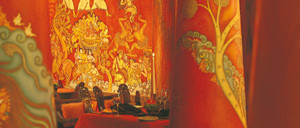
The Spice Route Restaurant
The Atrium had been designed by Hong Kong based Indian architect Chandu Chhada. Now designer Rajeev Sethi, the celebrated cultural tsar of India created the 'The Spice Route'. Never before had a restaurant in India such a feed-back. Acclaim came from all over the world. A correspondent of the New York Times wondered: 'I cannot recall a time, during my 20-odd years of writing about restaurants when I recommended a restaurant for its decor.' Here, in October 1998, a star was born. A confident Thai lady with the sweet-sounding name Veena Arora became the chef of The Spice Route, the first female chef of a restaurant of note in India. Part of her success is a collection of home cooking recipes. 'From my mum,' she confesses.
 The Royal Ballroom. Here the charismatic Muslim leader Jinnah founded Pakistan.
The Royal Ballroom. Here the charismatic Muslim leader Jinnah founded Pakistan.
The Next Generation: Gobind Akoi, the son of Jas Singh Akoi, became the new executive director of the hotel in 2001. His father elegantly stepped aside and handed his dream, his vision over to his son. Gobind Akoi was at Cornell himself, had worked in the USA and knew that he needed a professional team to run The Imperial. He found Rishi Kapoor, who took over the part of strategic planning. Soon The Imperial was the first hotel in India to install Fidelio, a hotel operating software. The Italian restaurant 'San Gimignano' became an other India's sensation. In 2002 Frenchman Pierre Jochem became the first foreigner at the helm of The Imperial since the 1950s. He was an ex-general manager of The Pierre in New York (in addition to other leading Asian hotels).
Pierre's persistence often needed a good portion of sense of humour: 'When I made my first rounds through the 285 rooms hotel,' he recalls, 'I heard an old, rattling vacuum cleaner at work. I said: That's a fairly old model; and the maid said. Yes, indeed, but it doesn't matter, when it breaks down we have a second one. On the first of January we start to vacuum the hotel on one side, at the end of the year we finish at the other.' Today Jochem laughs about this: 'The next morning we bought 50 vacuum cleaners. It took me four months to make sure that every room was vacuumed every day.
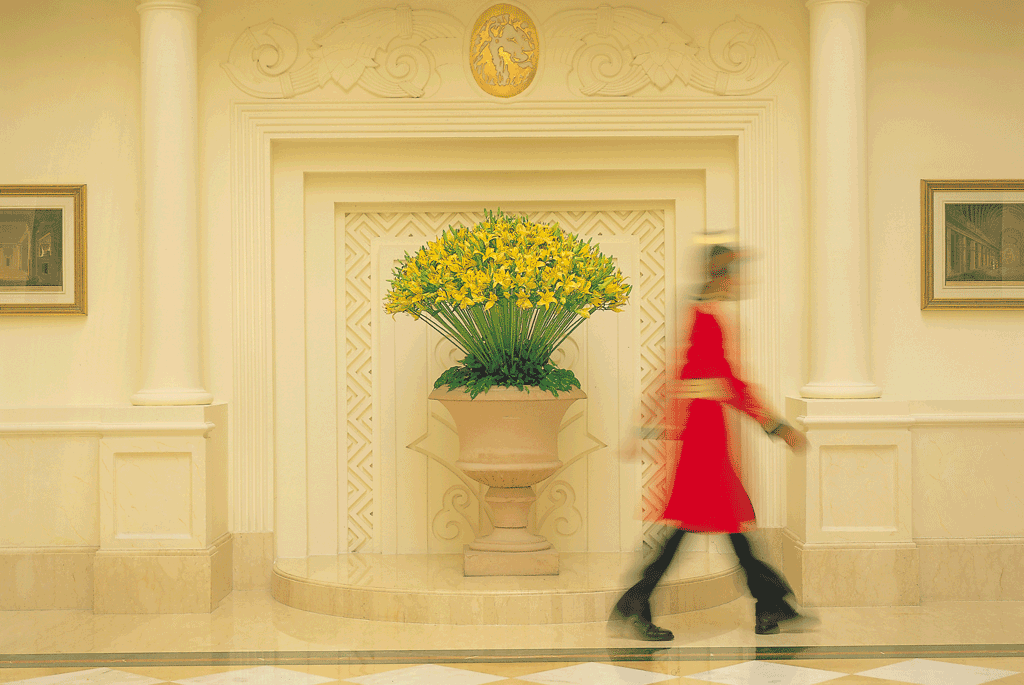

Uniforms for all staff were ordered from designer Raghavendra Rathore.
The Imperial became the first hotel in India to hire music designer Marc Barrott to create special moods in different sections of the hotel. In the kitchen leading European chefs motivated their Indian colleagues. A French pâtissier created delightful little 'sins'. Flower arrangements all over the hotel were inspired by Strasbourg florist Groll. The housekeepers of competing hotels were seen once a week to copy the set up. Chic wooden furniture was placed on the lush lawns in front of the terrace. A high-speed Internet connection was laid into every room, with WIFI on all floors. Today 21 Art Deco at 660sq.ft (61sqm) offer bathroom linen and duvets from Porthault of France, Bang and Olufsen TV sets, marble from Italy, sanitary fixtures from USA, Italy and Singapore, Burmese teak wood floors, French wood furniture and Italian glassware. These and all the other name-suites are among the grandest in the country, providing a home away from home to Her Majesty, the Queen of the Netherlands or Sir Richard Branson, who arrived on Virgin wings with 140 of his closest friends in tow.
Commercial success followed. By 2003 the hotel defended the second highest room rate in the country. The Imperial's turn-around became a synonym of economic success, its management considered one of the most disciplined and professional of all Indian companies. The company is a reflection of the changing times in India: 'My team is one of the youngest in any hotel in India – new thoughts, new ideas, new energy,' says Gobind Akoi, full of pride. Photographers arrived from all over the world to shoot the hotel. New York Times columnist Mark Bittmann recommended The Spice Route to his readers. More and more magazines published articles about the magnitude of The Imperial's Art collection. The Museum Hotel concept was born. What Jas Singh Akoi had conceived had become a triumphant reality.

The Imperial's symmetric design originally encouraged the idea to have the main entrance from the terrace, but in fact the entrance was always from the side to retain the serene setting of the tranquil lawns in front of the hotel.
From a sleeping legend The Imperial turned into one of the most famous hotels in the world. The news of the success of The Imperial travelled so far, that a leading American university entertained a case study on the 'fastest turnaround in the hotel industry'. What went missing in most hotels had been carefully preserved at the Imperial: the human factor and the humble fact that many people working in this hotel have been here for over 30 years. While other hotels have closed their doors and released all old staff to reopen years later with a shining new interior and brand new software called employees, The Imperial has held on to its home-grown staff. And the old staff has joined the new management team (with German quality driven for a while by resident manager Martin Kleinmann) in the turnaround of the century. Back to the beginning of the story: when I arrived in Delhi after years of absence, I gasped at the new splendour of the good old Imperial. The question if I would like to write the history of the hotel was rhetorical. Of course I wanted to do it. It was in fact an honour.
 Today Indian hotelier Vijay Wanchoo manages the hotel with gentle esprit, travellers from all four corners of the world enjoy the hotel tremendously.
Today Indian hotelier Vijay Wanchoo manages the hotel with gentle esprit, travellers from all four corners of the world enjoy the hotel tremendously.
Visit the BOOKSTORE and read more about our research, the book and The Imperial New Delhi.

